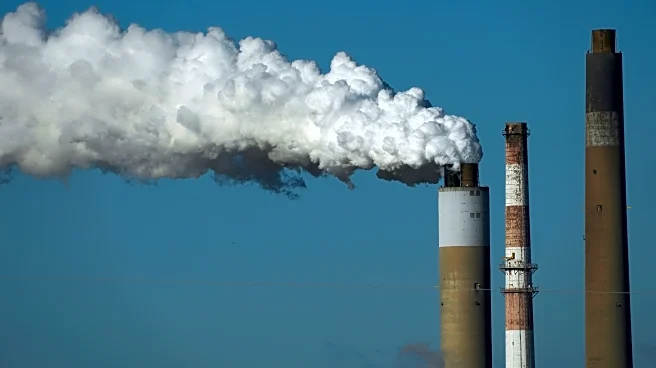What's Happening?
A recent study conducted by Arctic, Antarctic, and Alpine Research has revealed that the summit of Mount Rainier, a prominent peak in Washington, has decreased in height by 20 feet and shifted southward.
This significant change has raised concerns among scientists and environmentalists, prompting calls for enhanced glacier monitoring. The study highlights the potential impact of climate change on the mountain's glaciers, which are crucial for maintaining the region's water supply and ecosystem balance. The findings underscore the need for increased attention to the effects of climate change on natural landmarks and the importance of preserving these vital resources.
Why It's Important?
The decline in Mount Rainier's summit height is a stark indicator of the broader impacts of climate change on natural environments. Glaciers play a critical role in regulating water flow and supporting biodiversity, and their alteration can have far-reaching consequences for local communities and ecosystems. The study's findings emphasize the urgency of addressing climate change and implementing measures to protect and monitor vulnerable areas. Enhanced glacier monitoring could provide valuable data to inform policy decisions and conservation efforts, ensuring the sustainability of water resources and the preservation of natural habitats.
What's Next?
In response to the study, environmental groups and researchers are advocating for increased funding and resources to expand glacier monitoring efforts. This could involve deploying advanced technologies and methodologies to track changes in glacier size and movement more accurately. Additionally, policymakers may consider integrating these findings into broader climate action plans, focusing on mitigation strategies to reduce greenhouse gas emissions and promote sustainable practices. Collaboration between government agencies, scientific institutions, and local communities will be essential to effectively address the challenges posed by climate change and safeguard natural landmarks like Mount Rainier.
Beyond the Headlines
The changes observed at Mount Rainier highlight the interconnectedness of climate systems and the potential for cascading effects on regional and global scales. As glaciers retreat, they can contribute to rising sea levels, affecting coastal communities and ecosystems worldwide. Furthermore, the loss of glacial mass can alter weather patterns and water availability, impacting agriculture, wildlife, and human populations. This development serves as a reminder of the complex and multifaceted nature of climate change, underscoring the need for comprehensive strategies that address both immediate and long-term environmental challenges.














